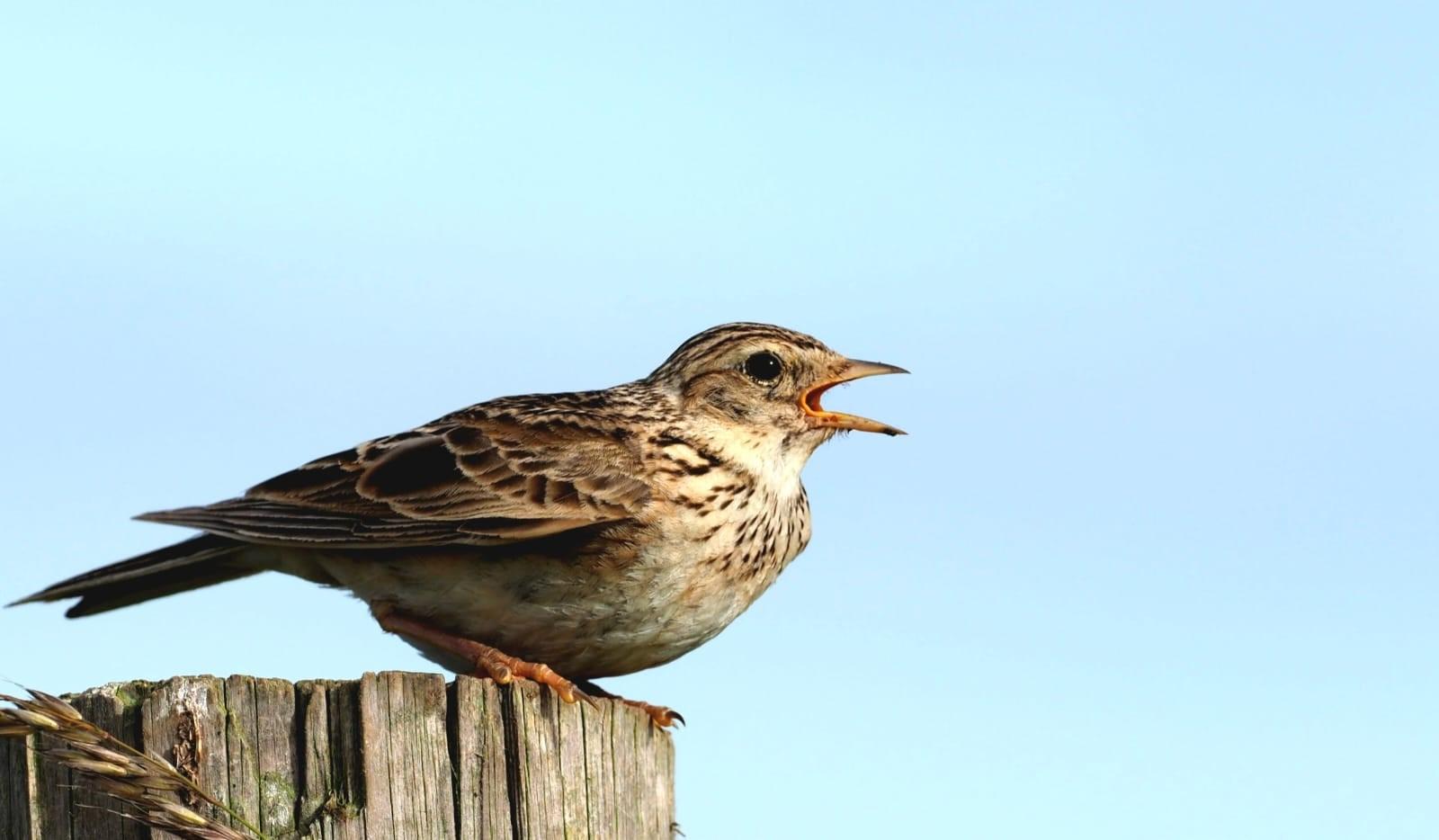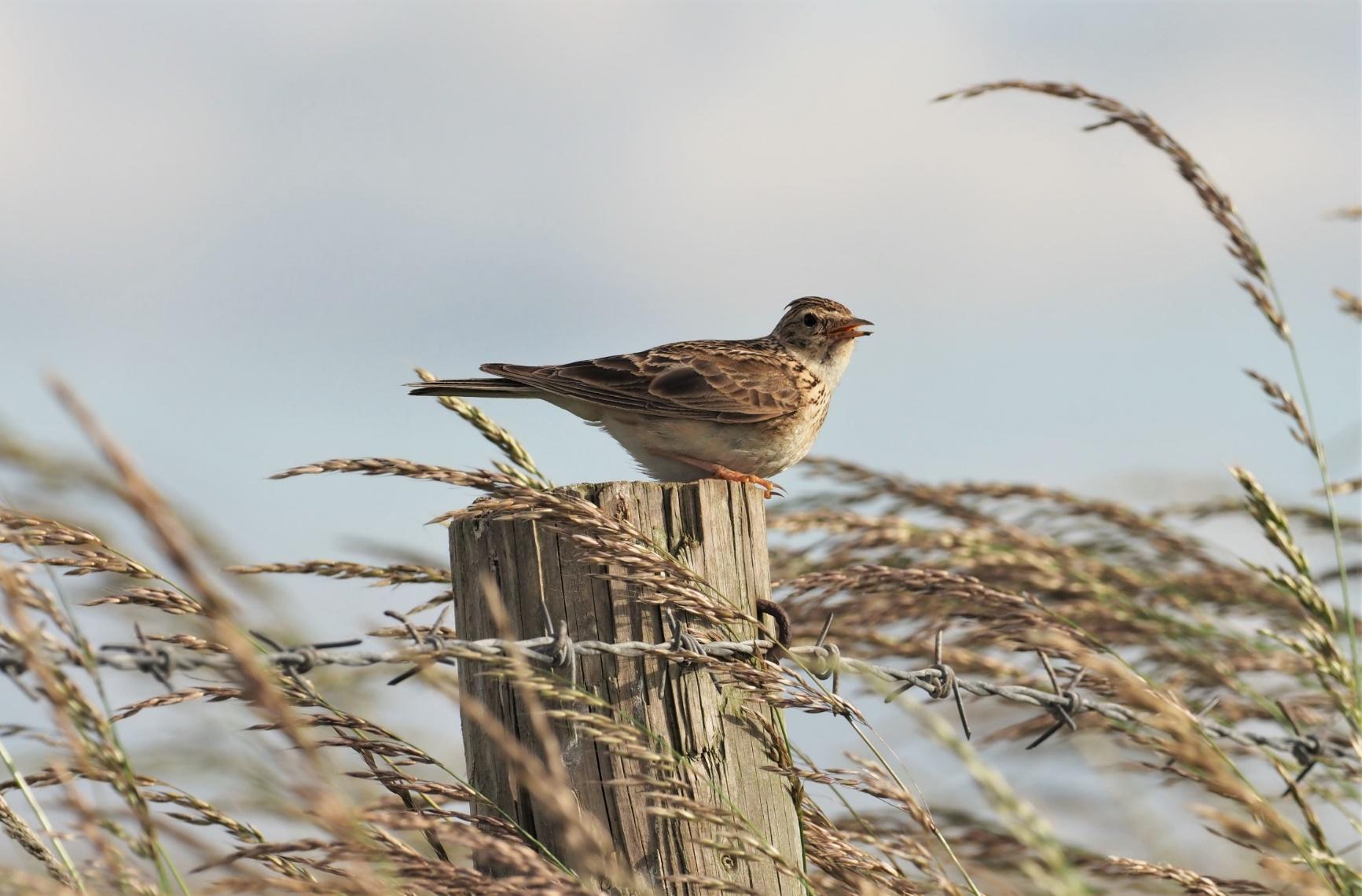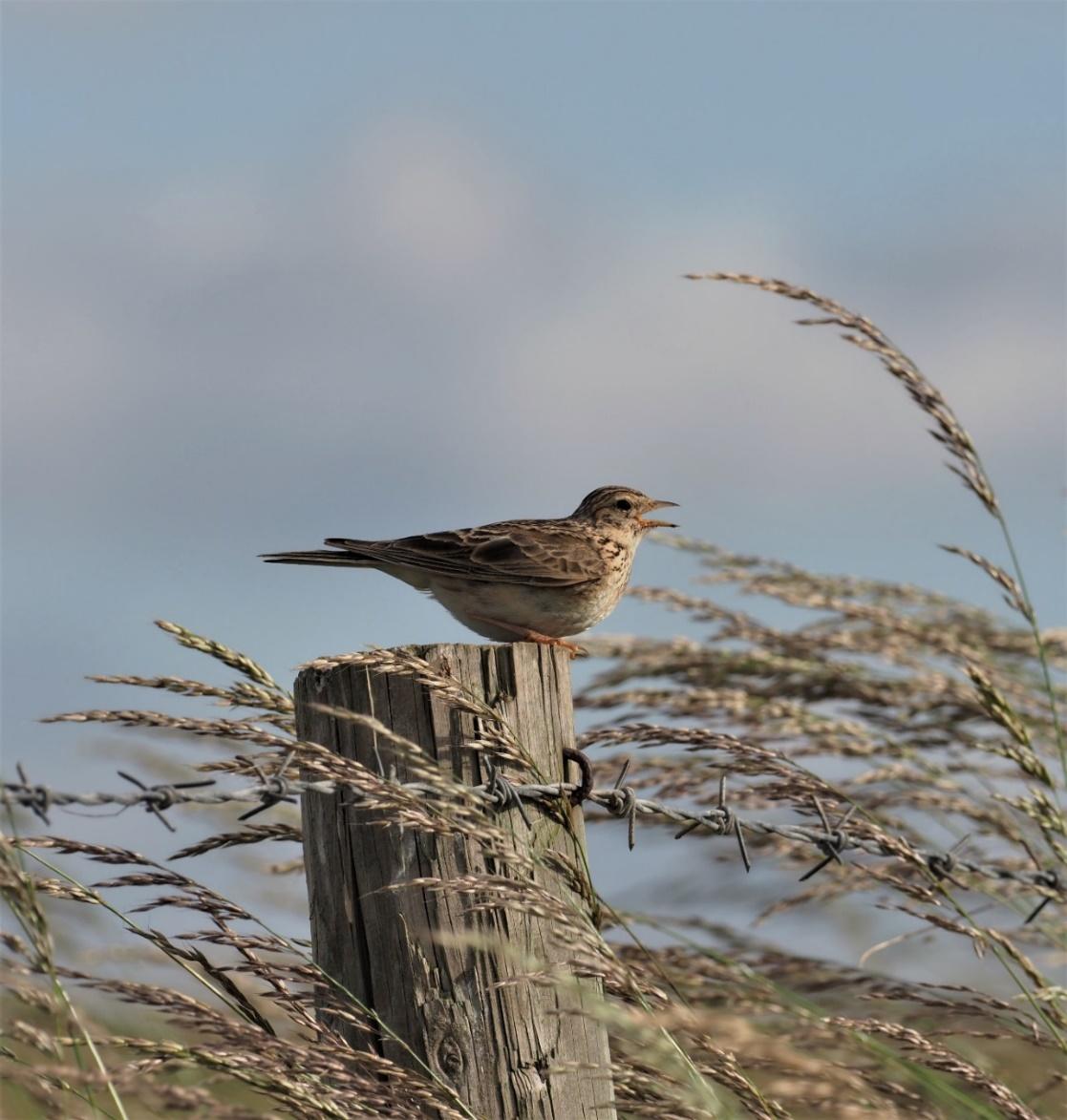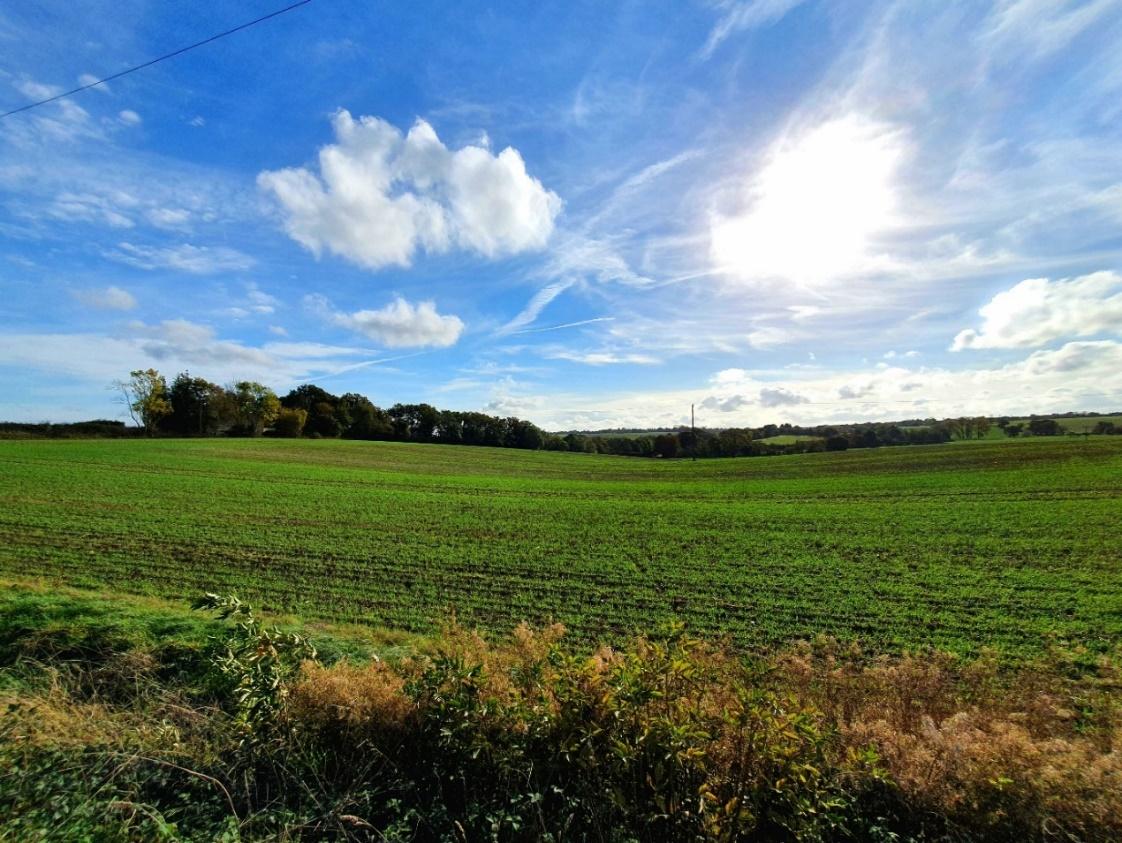SOS – Save our Skylarks
With a rapid decline in numbers in the UK, James Blake Associates’ latest bird surveys salute this species and offer mitigation schemes to help Save Our Songbirds
Spring sees the start of the new ecology seasonal window and a sight to behold is the soaring Skylark and its spectacular song flight, soon to be gracing our arable fields across the nation.
This medium-sized songbird sings a complex melody of mellifluous notes as a mating call and to establish their territories. It raises its crest of feathers it on its head when displaying or feeling threatened but what it possibly lacks in striking plumage, more than compensates with magnificent song.
Since medieval times, the rather innocuous Eurasian Skylark has delighted writers and the public alike with its incredible song flight. Shakespeare described it as the ‘merry lark’ that acts as the ‘plowmen’s clocks’, as the ‘lark at break of day arising from the sullen earth, sings hymns at heaven’s gate’.
The song flight is one of nature’s wonders. Watching a bird ascend to up to 1000 feet above the ground, disappearing into the blue sky above on a bright spring day. Skylarks are birds associated ith semi-natural grassland systems, from the steppes of Asia to the uplands of Northern England. However, in the UK, they are most commonly found on arable farmland, using nesting cover and bare ground for feeding that certain crops provide throughout the year.
Males are very territorial, using their long song flights at high altitude to broadcast to rival males and potential mates, as the open landscapes they use are lacking in high perches usually.
The song flight serenade
The energy demands of the song flights are huge and so this stamina has led females to decide the quality and selection of their potential mate. The higher the ascent and the longer the serenade of the song flight helps determine the best mate to win her over.
Other species rely on attracting their mate with bright plumage, but this is not the case for the Skylarks with their cryptic straw-brown and streaked feathers. However, this gives them an added advantage allowing excellent camouflage protection from predators on the ground.
Sadly, the once common sight of Skylarks above our arable fields has become less frequent in recent years. The British Trust for Ornithology’s (BTO) Common Birds Census showed that the Skylark’s decline began in the late 1970s, due to a change in farming practices. For example, more efficient herbicides, reduction of winter stubbles, increase in autumn sown crops, are some of the contributing factors that have led to less food availability and a lack of suitable nesting habitat. In the UK, the number of breeding Skylarks declined by approximately 55% between 1975 and 1994. Although this showed signs of slowing down, there was still a decline in the Skylark population of 19% in the UK between 1995 and 2020.
This rather abrupt decline has led this species to be red-listed on the most recent Birds of Conservation Concern list and a UK Biodiversity Action Plan UK (BAP) priority bird species, being one of the most threatened species and requiring conservation action under the BAP UK, with many counties making this a target species for their own biodiversity action plans.
James Blake Associates, the nationwide environmental consultancy and specialists in ecology and biodiversity, have been involved in numerous projects where the assessment of the local bird population has been a key part of the ecological assessment for development sites. These include residential and commercial development sites, agricultural and renewable energy including solar farms. The multi-disciplinary firm offers dedicated ecology surveys and reports providing guidance on the impact and placement of buildings and solar farms to aid successful green schemes and biodiversity.
–

-The Sound of Skylarks
Skylark mitigation schemes
James Blake Associates provide both wintering and breeding bird surveys to establish the population of Skylarks using the site throughout the year. This then allows us to provide appropriate mitigation schemes or site enhancements such as Skylark mitigation plots, for the provision of new open spaces, where the sowing of certain species is recommended to provide food resources and potentially nesting habitat.

Sitting on a song perch
In the words of Shelley:
‘on Sound of vernal showers
On the twinkling grass,
Rain-awaken’d flowers,
All that ever was
Joyous, and clear, and fresh,
thy music doth surpass.’
We hope you can have the opportunity on a balmy spring day to hear the sound of the Skylark and together we promote a collaborative approach to protect our beautiful birdlife.
To book your ecology survey or for more information on our multi-disciplinary services covering arb, biodiversity net gain, landscape design, please contact our team today:
James Blake Associates |
jamesblake@jba-landmarc.com | 01284 335797


Up with the Skylarks – James Blake Associates’ Field ecologist, Sean Minns, conducts field ecological assessments in East Anglia




